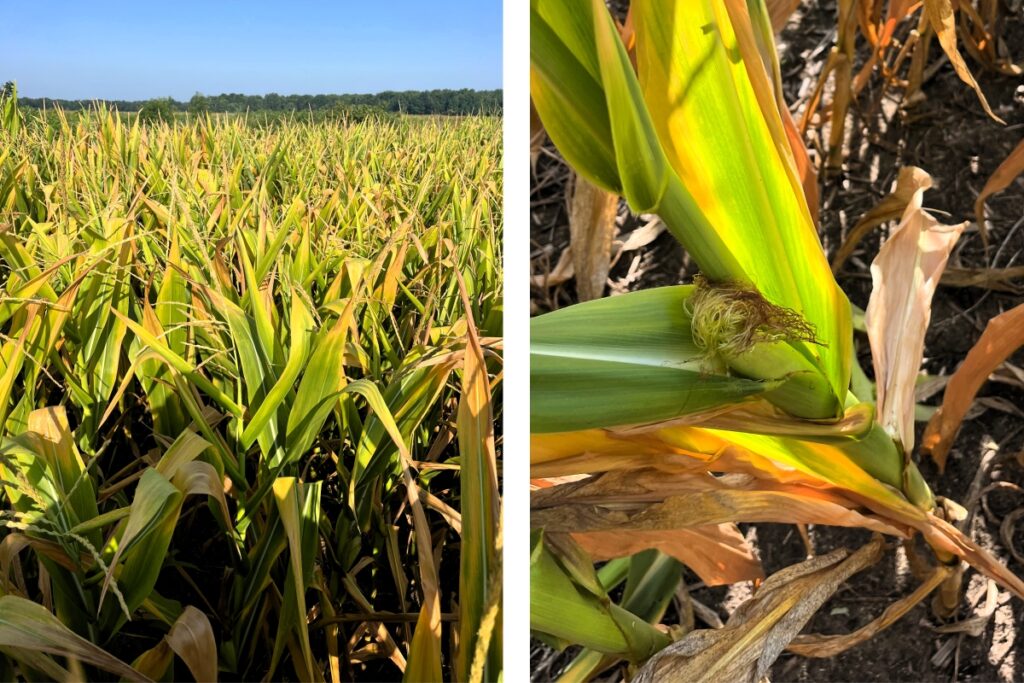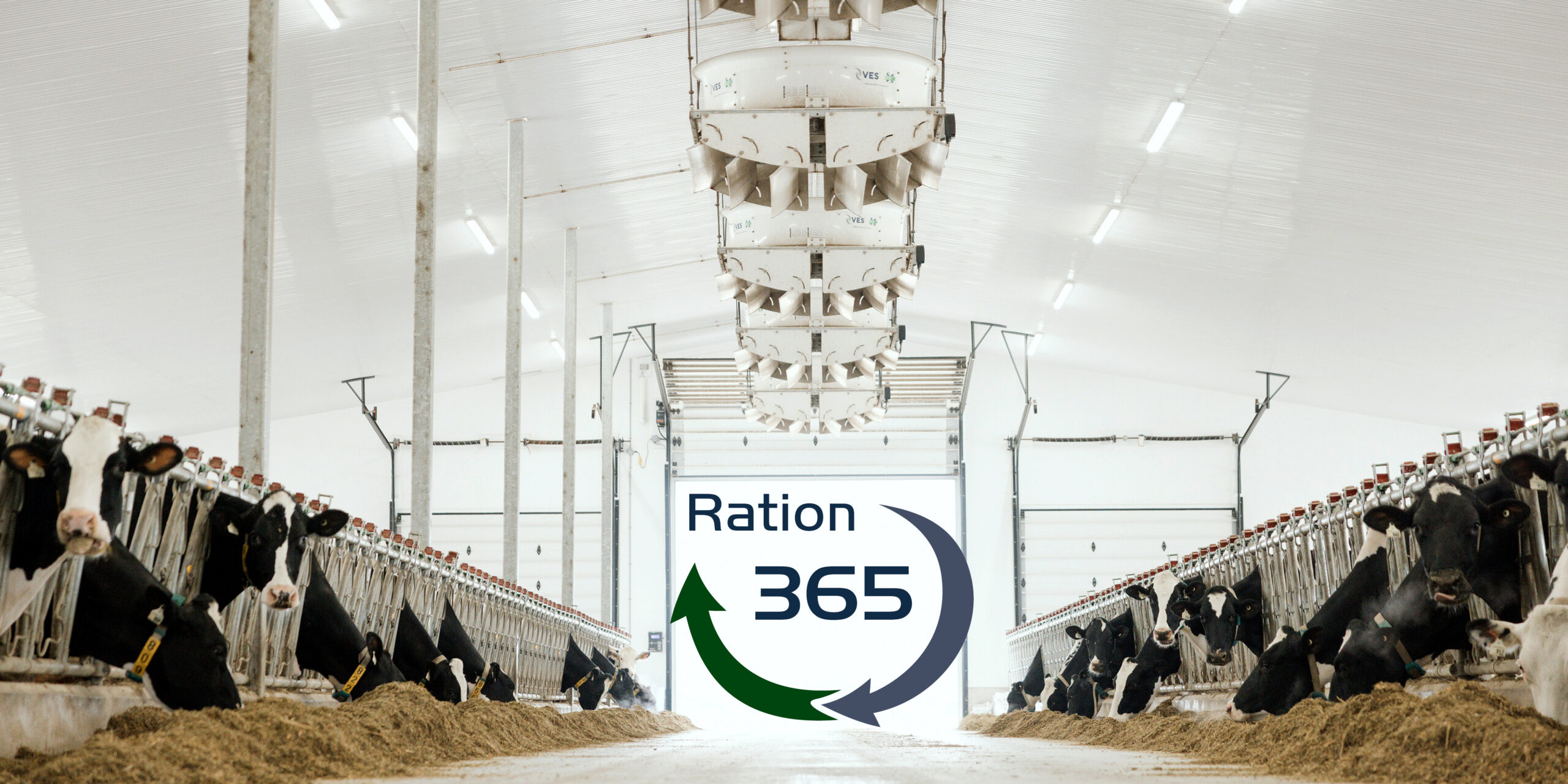Drought-Stressed Corn & Silage Harvest Considerations
August 22, 2025In many areas of the country, the dry weather has persisted essentially from June to the middle of August, and the forecast is not particularly promising for any relief in the near future. This means that many producers in these areas are struggling now with evaluating drought-impacted corn fields for possible silage harvest options. Below are some key reminders.

- Evaluate fields for yield potential by assessing pollination success, plant height, and variability across the field. White blisters on the ear will indicate successful pollination. Without at least a modest kernel set, improvements in yield or quality as we move through August are not possible.
- Yield estimates for drought-damaged corn with very poor pollination are approximately 1 tonne per acre of silage (70% moisture) for each foot of plant height.
- Contact Agricorp at 1-888-247-4999 to determine how using this corn as silage will impact a crop insurance claim.
- Digestible energy of corn silage that has little or no grain will be low. Consult a nutritionist to help find the best use for this feed. In most cases, drought-damaged corn silage will not be adequate for high-producing dairy cow rations.
- Although in many cases the drought-damaged corn stalks may appear brown with outer leaves completely desiccated, silage moisture levels may be surprisingly high (i.e. above 70%). Moisture measurements should be taken to avoid improper harvest moistures. Sample at least 10 plants by running them through a chipper/shredder and then determining moisture content by a Koster Tester, microwave, or sending the sample to a lab.
- Be aware of the risk of nitrate poisoning. The biggest risk of nitrate accumulation exists when rainfall occurs and nitrates move into a drought-impacted plant. Wait at least 5 to 7 days following a rainfall before harvesting. If no rainfall has occurred, the nitrate risk is lower, but testing for nitrates is still strongly recommended.
- Silo gas becomes an additional risk in drought-damaged silage. Nitrogen dioxide has a bleach-like odour and can be produced soon after material is placed in the silo. It is heavier than air and rests just above the silage surface but can flow down unloading chutes and into barns. The impacts of silo gas can be sudden and include lung damage and death.
- Replanting a fall forage crop after corn harvest may be a reasonable technique to increase forage supplies. Options may be restricted by the herbicide used in the original corn crop. Oats are probably the top candidate. Residual N from the corn crop may eliminate the need for additional N on the oats.
- Consider establishing winter cereals like cereal rye or triticale to allow for additional feed to be harvested in late spring of 2026.
For additional information, consult the following resources:
Using moisture stressed corn as livestock feed | OMAFA
Managing Drought Stressed Corn | Penn State Extension
The Use and Pricing of Drought-Stressed Corn | University of Nebraska–Lincoln Extension
Adam Parker, CCA-ON
Regional Manager | Ontario
Maizex Seeds

